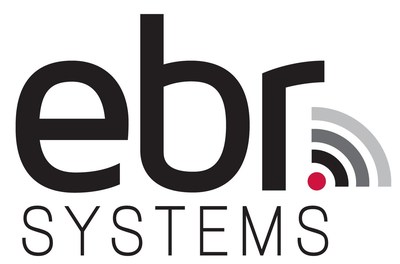EBR Systems, Inc., developer of the world’s only wireless cardiac pacing system for heart failure, today announced it has closed $30M in new funding to complete enrollment of its pivotal SOLVE CRT clinical trial and to prepare for commercialization of the WiSE Cardiac Resynchronization Therapy (CRT) System.
|
SUNNYVALE, Calif., Aug. 27, 2019 /PRNewswire/ -- EBR Systems, Inc., developer of the world's only wireless cardiac pacing system for heart failure, today announced it has closed $30M in new funding to complete enrollment of its pivotal SOLVE CRT clinical trial and to prepare for commercialization of the WiSE Cardiac Resynchronization Therapy (CRT) System.
This financing was led by Australian private equity firms Brandon Capital Partners and M.H. Carnegie & Co. and included participation by prior investors Split Rock Partners, Ascension Ventures, and Dr. Thomas Fogarty's Emergent Medical Partners, among others. SOLVE CRT is EBR's multi-center, randomized, double blinded, prospective international study intended to assess safety and efficacy of the WiSE™ (Wireless Stimulation Endocardially) pacing technology in support of U.S. Food and Drug Administration (FDA) premarket approval (PMA) application. The study is enrolling 350 heart failure patients who have failed to respond to, or are otherwise unable to receive, conventional CRT. It is expected to complete enrollment in 2020. "We are encouraged by the results and patient benefit shown in previous studies using the WiSE™ System and as such, we are excited to be continuing to support EBR Systems to bring this important technology to the market," said Dr Chris Nave PhD, Managing Partner at Brandon Capital Partners. "EBR's technology promises to revolutionize cardiac resynchronization therapy." The company also announced John McCutcheon has joined EBR Systems as President and CEO. John brings more than three decades of experience as a medical device executive and has extensive background in clinical studies and commercialization. Prior to EBR, John served as the President and CEO of Ceterix Orthopaedics and Emphasys Medical. "I'm delighted to join the fantastic team at EBR Systems to bring the unique WiSE System to the market and help improve patient outcomes," said John McCutcheon, President and CEO of EBR Systems. "I look forward to guiding the organization through the crucial next steps of completing the study, gaining regulatory approvals, scaling manufacturing, and beyond." Allan Will, former Chairman and CEO of EBR Systems, assumes the role of Executive Chairman of EBR Systems and remains actively involved with advancing the business. About Heart Failure and Cardiac Resynchronization Therapy (CRT) Cardiac resynchronization therapy is a proven treatment that improves symptoms and reduces hospitalizations and mortality1,2 by electrically stimulating the heart. Also referred to as biventricular pacing, CRT uses wire leads to synchronize the left and the right ventricles so that the two chambers beat together, thereby improving the heart's efficiency. Approximately 200,000 patients are treated worldwide each year with traditional CRT. 3 EBR Systems' WiSE Technology EBR Systems' WiSE CRT System is the world's only wireless, endocardial (inside the heart) pacing system in clinical use for stimulating the heart's left ventricle. This has long been a goal of cardiac pacing companies since internal stimulation of the left ventricle is thought to be a potentially superior, more anatomically correct pacing location. WiSE Technology enables cardiac pacing of the left ventricle with a novel cardiac implant that is roughly the size of a large grain of rice. The need for a pacing wire on the outside of the heart's left ventricle – and the attendant problems – are potentially eliminated. The WiSE™ CRT System is CE Mark approved. In the US, it is an investigational device and not available for sale. About EBR Systems 1 McAlister FA, Ezekowitz J, Hooton, N, et al. Cardiac Resynchronization Therapy for Patients with Left Ventricular Systolic Dysfunction: A Systematic Review. JAMA. 2007; 297(22): 2502-14. Contact:
SOURCE EBR Systems |






